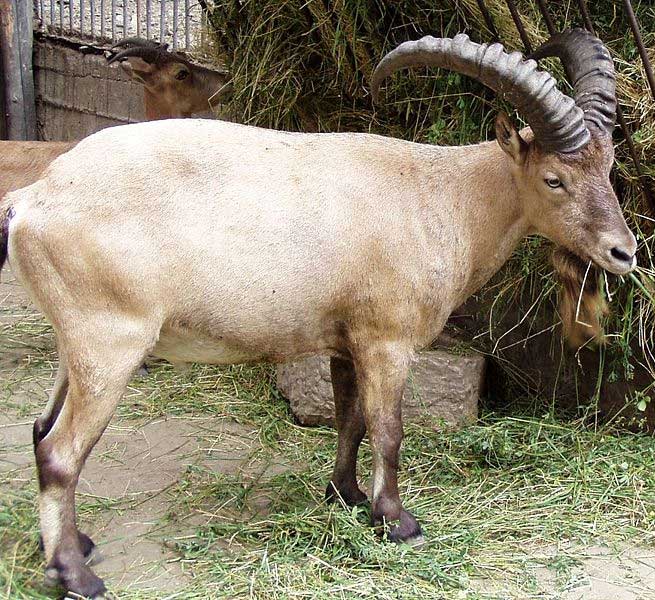
Capra caucasica (Information about this image)
Superregnum: Eukaryota
Regnum: Animalia
Subregnum: Eumetazoa
Cladus: Bilateria
Cladus: Nephrozoa
Superphylum: Deuterostomia
Phylum: Chordata
Cladus: Craniata
Subphylum: Vertebrata
Infraphylum: Gnathostomata
Superclassis: Tetrapoda
Cladus: Reptiliomorpha
Cladus: Amniota
Cladus: Synapsida
Cladus: Eupelycosauria
Cladus: Sphenacodontia
Cladus: Sphenacodontoidea
Ordo: Therapsida
Cladus: Theriodontia
Subordo: Cynodontia
Cladus: Mammaliaformes
Classis: Mammalia
Subclassis: Trechnotheria
Infraclassis: Zatheria
Supercohort: Theria
Cohort: Eutheria
Cohort: Placentalia
Cladus: Boreoeutheria
Superordo: Laurasiatheria
Ordo: Artiodactyla
Subordo: Ruminantia
Familia: Bovidae
Subfamilia: Caprinae
Genus: Capra
Species: Capra caucasica
Subspecies: C. c. caucasica – C. c. severtzovi
Name
Capra caucasica Güldenstädt & Pallas, 1783
References
Capra caucasica in Mammal Species of the World.
Wilson, Don E. & Reeder, DeeAnn M. (Editors) 2005. Mammal Species of the World – A Taxonomic and Geographic Reference. Third edition. ISBN 0-8018-8221-4.
IUCN: Capra caucasica Güldenstädt & Pallas, 1783 (Endangered)
Vernacular names
English: Tur, West Caucasian Tur, Kuban Tur
suomi: Kubaninturi
magyar: Nyugat-kaukázusi kecske, kubáni túr
polski: Koziorożec kaukaski
svenska: Tur, västkaukasisk stenbock
The West Caucasian tur (Capra caucasica) is a mountain-dwelling goat-antelope native to the western half of the Caucasus Mountains range, in Georgia and European Russia. It is listed as Endangered on the IUCN Red List, as the wild population is estimated to be between 5,000 and 6,000 individuals.[1]
Names
It is also known by the names "zebuder," "zac" and "Caucasian ibex."[2][3]
Description
West Caucasian turs in Caucasus Biosphere Reserve
West Caucasian turs stand up to 1 m (3.3 ft) tall at the shoulder and weigh around 65 kg (143 lb). They have large but narrow bodies and short legs. West Caucasian turs have a chestnut coat with a yellow underbelly and darker legs. Their horns are scimitar-shaped and heavily ridged. In males, these horns are around 70 cm (28 in), while in females they are much smaller.
Habitat
West Caucasian turs live in rough mountainous terrain between 800 and 4,000 m (2,600 and 13,100 ft) above sea level, where they eat mainly grasses and leaves.
Predators
They are preyed upon by steppe wolves and lynxes; Persian leopards and Syrian brown bears may also be possible predators.
Behaviour
West Caucasian turs are nocturnal, eating in the open at night, and sheltering during the day. Females live in herds of around 10 individuals, while males are solitary.
See also
Caucasus mixed forests
East Caucasian tur
Capra dalii
References
Weinberg, P. (2020). "Capra caucasica". IUCN Red List of Threatened Species. 2020: e.T3794A22143809.
Knight, Charles (1856). English Cyclopaedia/Cyclopaedia of Natural History. London: Bradbury and Evans. p. 771.
Goodrich, Samuel Griswold (1859). Illustrated Natural History of the Animal Kingdom, vol. 1. New York: Derby & Jackson. p. 511.
Retrieved from "http://en.wikipedia.org/"
All text is available under the terms of the GNU Free Documentation License

